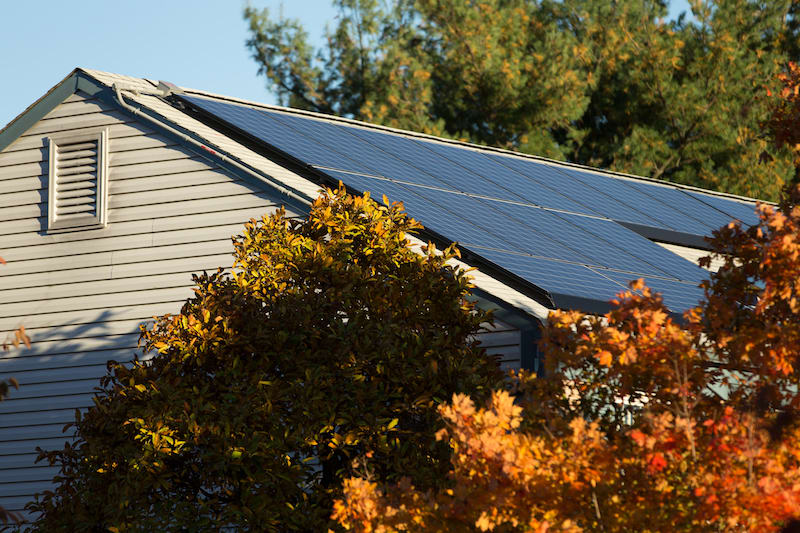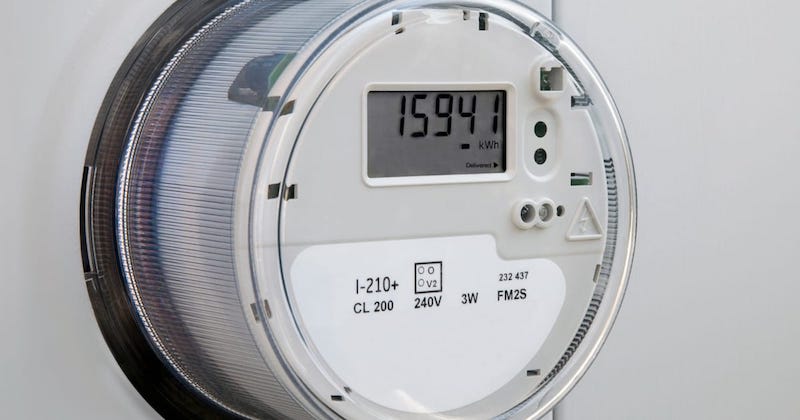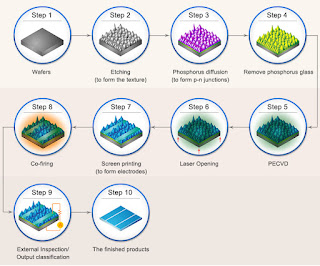How do solar panels work?
The sun is the ultimate source of energy, and we can all benefit by tapping into its resources. But how do solar panels work? How does something as simple as a solar panel take sunlight and use it to power your oven, television, and even Xbox?
Basically, what’s happening is your solar panel system uses photons to separate electrons from atoms. Photons are particles of light. The process of separating electrons from their atoms creates solar electricity.
Here’s the process in more detail:
1 - Solar panels collect sunlight

Every solar panel contains photovoltaic (PV) cells. PV cells take light, or photons, and turn that light into solar electricity. When sunlight hits the solar panel, PV cells get to work by producing direct current (DC) electricity. (Pssst...want to geek-out at the science behind this? Check out NASA’s explanation.)
This is all great—but DC electricity can’t power your home on its own. That’s where the other pieces of solar energy equipment come into the picture. On to inverters!
2 - Inverters convert solar power to usable electricity
Some solar panel system setups have a single inverter (often called a “string” inverter) for the entire system. Some have a microinverter attached behind each solar panel. The most important thing to know about inverters is that they convert DC electricity, produced by the solar panels, into alternating current (AC) electricity. That’s the good stuff that powers your home. Now we’re getting somewhere.
3 - Solar electricity is used in the home
Solar electricity runs through your net meter, makes itself comfortable in your home, and powers your appliances. It works just like your traditional electricity does now—you don’t have to change a thing. If your solar panel don’t produce enough energy to cover all of your electricity needs, don’t worry. You’re still connected to traditional power companies via the grid, so you can automatically draw more energy from your utility when you need. What happens if you produce more power than you use? Let’s find out.
4 - Leftover solar electricity goes back to the grid
It might seem counterintuitive to be on the traditional power grid when you have a solar energy system, but being on the power grid has its advantages. It allows you to use as much electricity as you need before sending any excess power back to your power company to use. Solar panels generate electricity when the sun is up, but we use electricity at night too, when we’re not producing solar power. That’s why it’s important to stay connected to the power grid.
5 - Electricity is measured by the net meter

For this last part, you’ll need to know what a net metering agreement is. Net metering is when your local utility company agrees to provide energy credits for any surplus power you produce and send it back to the power grid. In some cases, these energy credits can roll over so you accrue them long-term, and some utilities will even cut you a check for your power production credits.
The net meter device is installed in the home and measures the electricity going to and from the power grid. This meter is similar to the electric meter you probably have now, but it measures power going in two directions instead of just one. Have more questions?
A note on net metering
It’s important to note that if you have a shared PPA agreement where you pay for the solar energy your panels produce, you will most likely pay more for your solar power in the summer. This seems backward right? Let us explain: summer means more sunlight which also means more solar power production. BUT the good news is because you’re relying less on traditional electricity, it should help offset your total usage costs.
Now add in the value of accruing net metering credits, and while it may seem slow at first, it ends up saving you money in the long-run. Give it about twelve months after you’ve had solar installed to see the net metering process begin to tip in your favor.

Comments
Post a Comment